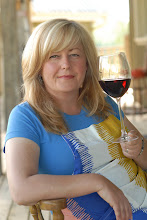Wine has a few challenges, such as pickles. Traditionally, eggs are also considered a difficult ingredient to pair to wine. Eggs are alkaline in nature, which is believed to clash with the wine’s acidity. Whil e this may be true, the Burgundians cook eggs in red wine. Some folks have no problem partnering an aged cheddar soufflé with red Bordeaux.
e this may be true, the Burgundians cook eggs in red wine. Some folks have no problem partnering an aged cheddar soufflé with red Bordeaux.
As far as this wino’s concerned, quiche works with wine. On first consideration, you may believe we should marry the most predominant flavours of a quiche with specific wines. So, for example, a quiche consisting of aged cheddar might work with a big, red wine, such as Bordeaux. While this combination no doubt works, who in their right mind, would spend hard earned money on a fine Bordeaux only to pair it with a simple egg dish? Not moi! If I served a red Bordeaux, my guests would also be chewing on a juicy mouthful of Filet Mignon! So, while this combination may work theoretically, it certainly lacks in common sense.
Most well made quiche is best to be harmonious in all its ingredients. This means that the cheese, meat and vegetables can be flavourful, yet not overpowering to the delicate nature of eggs.
While quiche -- made with heavy cream – works wonderfully with a creamy textured Chardonnay, I prefer a lighter styled, all-purpose white wine. Sparkling wine! Bubblies are multi-purposed and ideal for every occasion -- whether you’re serving quiche for breakfast, brunch, lunch, dinner or as an appetizer.
Sparkling wine has a good backbone of acidity that contrasts nicely with the saltiness in all cheeses, while cleaning the palate and not overpowering the delicate taste of eggs. It’s also festive, transforming an average brunch into an afternoon celebration.
For some, the topic of sparkling wine can be a bit challenging. After all, sparkling wine is made in various countries, styles, sweetness levels and quality standards.
Champagne is the most famous of sparkling wines. It is also the most northerly wine region in France. So, Champagne is the name of both the French province and the name of its sparkling wine. The grapes grown and vinified to produce this wine are Pinot Noir (providing backbone and structure), Pinot Meunier (contributing freshness and aroma), and/or Chardonnay (offering Champagne’s finesse and elegance).
There are generally a few types of Champagne. Grande Marque is considered a top Champagne from a particular company, such as La Grande Dame from Veuve Clicquot-Ponsardin. Grand Cru is made from vineyards rated at 100% in quality. Premier Cru is Champagne made from grapes from villages rated at 90 to 99%. Blanc de Noir is a white Champagne made from the black grapes, Pinot Noir and/or Pinot Meunier. Blanc de Blanc is a white Champagne made mostly from Chardonnay grapes. Rose has a tiny amount of red wine blended into its cuvee (blend).
Champagne and sparkling wines from around the world are made in various ways. Champagne and quality sparkling wines, such as some produced in Ontario, are made in a time consuming, traditional and most expensive method called “methode champenoise.” (You’ll see this term on the label if the bubbly was produced in this way.) The less expensive ways of making sparkling wine are the transfer method and the charmat method. These terms are not generally offered on the front label.
When purchasing sparkling wine, be aware of the level of dosage on the label. This represents the wine’s sweetness. Brut is the driest sparkling wine and the best match for quiche, at about one percent. Contrary to its name, extra dry is not quite as dry as Brut and offers more smoothness on the palate. It is about one to three percent. Sec has a hint of sweetness, from three to five percent. Demi-sec is semi-sweet, from five to eight percent. Doux is sweet, from eight to 15%.
Before serving Champagne or sparkling wine, be sure to chill it well, at least an hour in the refrigerator. When opening Champagne and sparkling wine, always keep a napkin over the cork and your hand on top of the napkin and over the cork as you turn. Turn the bottle away from your guests. (When you open the bottle, you have in your hands, about 165 pounds per square inch of pressure.) This is enough pressure to dent a wall or badly hurt someone. The long, flute glass is the best for sparkling wine as its small mouth opening helps to retain the bubbles for a longer time.
Sometimes I enjoy a white with quiche, but most often I choose sparkling wine. Just be sure that the wine or bubbly does not over power the subtle and delicate nature of this dish.
Crustless Bacon and Tomato Quiche
Serves 4
1 cup shredded cheddar
1/2 cup chopped spring onions
1 medium tomato, thinly sliced
1 tsp fresh lemon juice
6 thin strips cooked peameal bacon
salt and pepper to taste
4 eggs
2/3 cup flour
1/3 cup melted butter
1 tbsp baking powder
dash cayenne
1 2/3 cups milk
Preheat oven to 400 F. Spray a 9-inch pie plate with non-stick cooking spray. Layer cheddar, then onions, then tomato slices in the pie plate. Drizzle with lemon juice. Lay peameal bacon strips over tomato slices. Salt and pepper to taste. Set aside.
In a food processor or blender, blend eggs, flour, butter, baking powder, cayenne. Slowly add milk, blending until ingredients are well incorporated. Pour mixture over bacon. Bake 30 minutes or until center of quiche springs back and is golden. Do not overbake. Let stand for 7 to 10 minutes before serving.





No comments:
Post a Comment